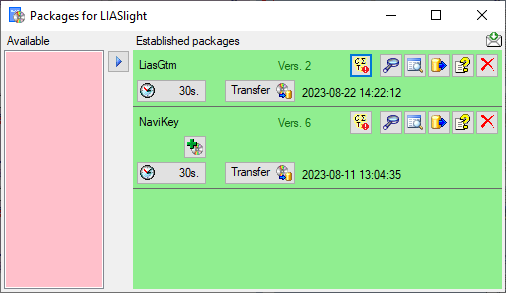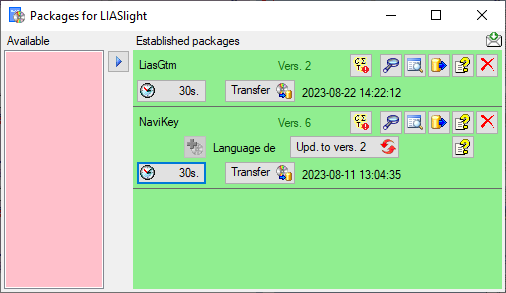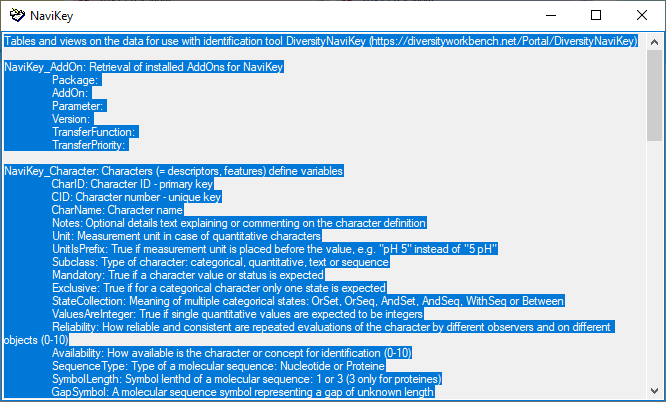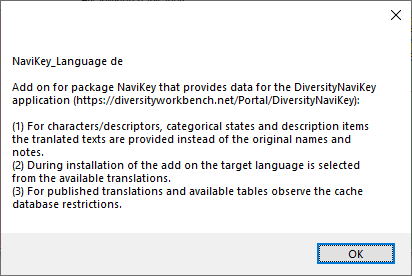 button as shown below. A window as shown below will open listing all available add-ons.
button as shown below. A window as shown below will open listing all available add-ons.
For certain packages there are add-ons available to adapt
a package to the special specifications of e.g. a project. To add an add-on, click
on the
 button as shown below. A window as shown below will open listing all available add-ons.
button as shown below. A window as shown below will open listing all available add-ons.

A window as shown below will open listing all available add-ons.

Certain add-ons require the selection of an add-on parameter. E.g. the Navikey_Language add-on requires the selection of the published translation language code. In this cases an additional selection window will be shown (see image below). Remark: Selecting the add-on parameter and therefore the installation of the add-on might require that data have been trasferred to the Postgres database before!

After the add-on has been added, you need to update it
to the current version of the add on with a click on the Upd. to vers. ...
 button (see below). A window will open where all the needed scripts will be listed.
Some add-ons are exclusive, meaning that no further add-ons can be added and further
updates of the package are organized via the add-on as shown below. To remove an
add-on you have to remove the package with a click on the
button (see below). A window will open where all the needed scripts will be listed.
Some add-ons are exclusive, meaning that no further add-ons can be added and further
updates of the package are organized via the add-on as shown below. To remove an
add-on you have to remove the package with a click on the
 button.
button.

An Add-on defines a version of the package it is compatible with. Add-ons can not be removed as they perform changes in the package. To remove an add-on, remove the package and reinstall it. If a package containing an Add-on needs an update you have to remove the package as well and reinstall it.
With a click on the first
 button besides the package
you can generate a description of all objects in the package (see below).
button besides the package
you can generate a description of all objects in the package (see below).

With a click on the second
 button besides the add-on
you can view its description (see below).
button besides the add-on
you can view its description (see below).
